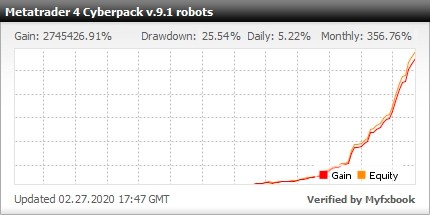$0+
Do Forex Robots Really Work?
A forex trading robot is a computer program that can do the trading instead of a human trader. Trading robots rely on trading signals and built-in trading systems that enable it to function independently. Integrated signals allow a trading robot to “decide” on the perfect time to buy or sell a currency pair, while the systems facilitate the actual trading process.
These features make these robots popular with new traders who are virtually clueless about forex trading.
Do Forex Robots Really Work?
Forex trading robots are gaining popularity as they help their users optimize time and capital. Because the forex market is open 24 hours a day, a person can keep trading while he is working his day job through his forex robot.
The rising fame of robot utilization leads to the manufacture of substandard versions that are a total waste of precious resources. Some manufacturers promise get-rich-quick schemes to market their products. This is a pitfall that new traders should be aware of. Not all trading robots are efficient.
With the infestation of the robot market, finding good and efficient ones can be tough. It is important to do a lot of research before deciding on a robot to purchase.
What is the Best Forex Trading Robot?
What do you need to look for in a Forex Robot? Here are some of the characteristics to look for or avoid when you are looking to narrow down the short list of Forex Robots to buy.
Avoid Forex trading robots that only offer back tests as verification of their profitability.
Backtests are simulations only against tick data (price data from a broker or third party source), hence they are not an accurate or true reflection of trading in actual market conditions. Delays in trade execution and slippage can severely affect the profitability of the forex robot.
Another great danger of backtesting is that it is easy to “curve fit” or over optimize the settings on the trading robot to suit the available data.
So what you have is a trading robot that has been optimized to suit historical data, rather than one that is flexible enough to adapt to current market conditions. The forex market, like all markets changes “personality” over time and hence, historical data is in no way a true indication of what will transpire in future.
To sum up the back testing argument, with the benefit of hindsight it is quite simple to optimize a robot to produce a profit, unfortunately, in live trading, we cannot benefit from this luxury. Hence backtesting is not a good indicator of the future profitability of a forex robot.
Look For Live Trading Statements, Not Demo Accounts
Not only do demo account data feeds sometimes vary in price and speed, they also do not give an accurate representation of the speed and accuracy of trade execution, no matter what your broker tells you, even if the price data is the same, the trade execution will vary enough to greatly affect your profitability. The longer the period of live trading statements the better. Be aware of any gaps in the statements which might indicate “cherry picking”, or selective use of trading statements for a particularly successful week, month or even 3 months.
Be Aware of Trading Conditions
That is, be aware of any restrictions on minimum take profits and stop losses, as well as spreads and leverage which may affect the operation of your forex trading robot. Also, recent NFA rules regarding hedging and FIFO may also affect the operation of your robot, so be aware of this if you are using an NFA registered broker.
Avoid Robots that Rely on a Take Profit that is Too Small or the Average Win is Too Small
If the difference between a win and a loss is too small, relatively small changes in slippage and trade execution can severely affect profitability.
Be Aware of the Type of Money Management (if any) Used
Many forex trading robots use some form of Martingale Theory, which effectively stacks lots or doubles lot sizes when a losing trade occurs. If the forex robot uses this form of money management there is a very real chance of over-leveraging in the event of prolonged periods of drawdown.
Avoid Forex Robots that Have a Win to Loss Ratio Greater than 80%
Some individuals might suggest 70%, but we could debate that. The fact is that to achieve these very high win-loss ratios, you must also carry floating losses or losing trades for extended periods before they may or may not realize a profit. This usually indicates that trades either do not have a stop loss present or carry an extremely wide stop loss, either of which is potentially dangerous to your trading account. Time after time I have seen these types of trading systems come unstuck after the worst case scenario happens.
Before You Buy
By observing these “rules” you will be able to better identify forex trading robots that are more likely to produce a profit over a longer period of time, but like everything in life, there are no guarantees. As mentioned earlier, the currency market does change personality and just because a robot has performed well for 2 years it doesn’t mean that it will continue to perform.
Need more high profit gain and safe robots, here it is Portfolio of expert advisors for trading at Forex market with Metatrader 4 (14 currency pairs, 28 forex robots)
https://forexfactory1.com/p/EuHp/
https://forexsignals.page.link/RealTime
